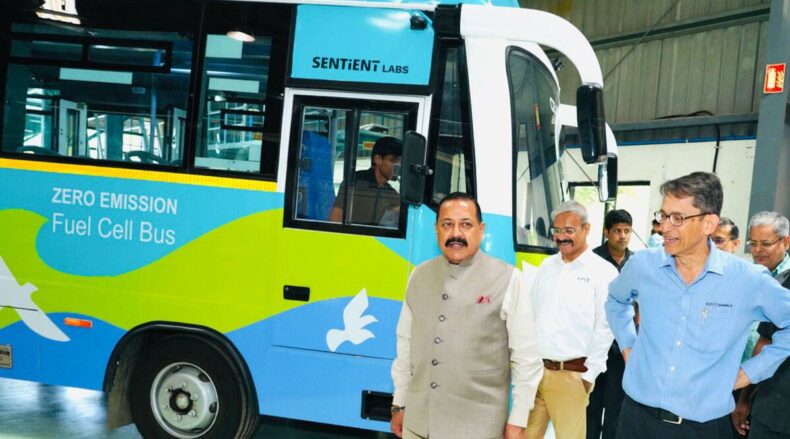
Hydrogen is a green fuel since it creates no emissions when used in a fuel cell. Natural gas, nuclear power, biomass, and renewable energy sources like the sun and wind may all be used to generate hydrogen for residential use. Because of these features, it is a promising fuel for use in vehicles and power plants. It has a wide variety of possible uses, including in vehicles, homes, portable power, and more.
According to VK Singh, the Minister of State for Road Transport and Roads in India, who made the statement on Friday, India’s hydrogen cell technology would be the most cost-effective given the low cost of solar electricity in the nation.
Singh, while delivering a speech at a national conference on electric mobility that was organized by ASSOCHAM, said that the government is encouraging the rise in the manufacture of numerous alternative forms of energy.

The upside of India’s Hydrogen Cell Technology
“India is lucky because solar prices are what they are in our country, and India’s hydrogen cell technology will be the lowest when it comes to the market,” he said, referring to the country’s good fortune with hydrogen cell technology.
Hydrogen may be created by either the electrolysis of water using solar energy to generate power or through the direct splitting of water using solar energy.
In an addendum to this, the minister stated that all parties involved in the EV industry should collaborate and that India has the potential to become the leading provider of electric vehicles worldwide.
Since nothing can happen in a vacuum, we need to make an effort to set up the ecosystem. We’re ready to do it, and the demand for electric vehicles is rising rapidly across the globe. Realizing our potential early on will serve us well. Instead of continuously having to play catch-up, he suggested that they might start off as the ‘go-to provider.’
Singh went on to state that the administration backs the shift toward electric transportation. It is necessary for us to investigate the possibilities, and for travel inside the city, we might focus our attention on electric mobility. We need to create a public transportation system that is not only more affordable but also of higher quality and more appealing so that more people will choose to use it. Because of concerns about battery range and the availability of charging infrastructure, long-distance travel on intercity routes is currently restricted.
During his remarks on the occasion, Prime Minister Narendra Modi’s advisor, Tarun Kapoor, said that India’s need for energy as well as its transportation sector would increase. In light of the fact that the transportation industry is responsible for 30–35 percent of total energy consumption, he estimated that it was responsible for around 17 percent of all greenhouse gas emissions.
Read More: Tata Power report Cyberattack: No Major damage done













